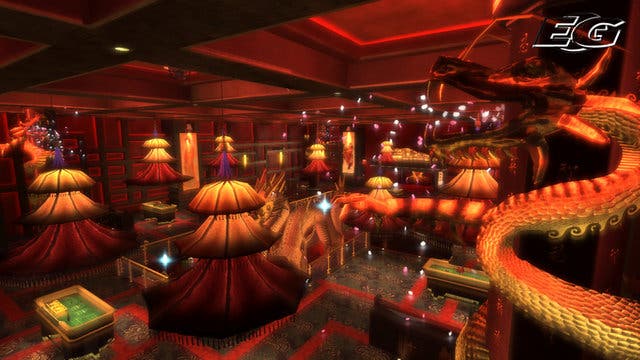Tom Clancy's Rainbow Six: Vegas
High Roller.
After last year's Lockdown debacle, Ubisoft knew it had a lot of work to do to repair the unexpected damage that Red Storm's buggy mess of a game did to the Rainbow Six series. Full of odd new additions, questionable design decisions and idiotic squad AI, it was obvious that they needed to go back to the drawing board and work out what people liked about the game in the first place if it was to keep up with the massive progress made by the other Tom Clancy games.
But it's actually been easier than that to sort the mess out - but perhaps slightly more complicated to explain the sudden improvement in the space of a year.
Although Ubisoft never makes a big deal about this, Vegas is made by an entirely different development studio to Lockdown - the Montreal team behind Rainbow Six 3 and the excellent standalone Black Arrow 'expansion'. Given how well-received those were, perhaps the best thing to do is pretend Lockdown didn't actually happen and think of Vegas as the 'real' follow-up to those two titles.
Forever changes
It's hardly surprising, then, to note that several of the new additions railroaded into last year's Lockdown have been quietly ditched for Vegas - for very sound reasons.
So, out go Ding Chavez (boo!), quicksaves, multiple pointless ways to blast a door down, tension-defeating heartbeat sensors, annoying trip wires and even more annoying sniping missions, and dense squad AI that seemed to have big problems shooting on target. The 'in' column makes for heartening reading: sensible checkpoint saves, Call Of Duty 2-style recharging heath system, superb squad AI, refined controls, duck and cover control system, squad revives, hugely improved visuals, multiple paths within levels, snakecam 'tagging' and, oddly, one fewer man in your squad.
On a basic, fundamental level, Rainbow Six Vegas is an absolutely huge leap up for the series, and easily one of the best tactical shooters ever made - but don't assume that means it's perfect.

Like many of Ubisoft's Tom Clancy games down the years, the storyline is - yet again - a bit pointless and far-fetched. It all starts off innocuously enough, with you in control of elite counter-terrorist operative Team Leader Logan Keller, trying to hook up with your pinned-down squad mates in the Mexican town of San Joshua del Mosquiera. With a look and feel matching the gritty cinematic intensity of Ghost Recon Advanced Warfighter, it's hard not to be instantly impressed. On a mission to hunt down Irena Morales, what seems like a straightforward assignment spirals out of control, with the Latino madwoman hellbent on causing maximum chaos for somewhat hard to fathom reasons - mostly involving Vegas casinos. We still can't work why she focuses most of her energies on terrorising Casinos. Maybe she lost big one time and wants revenge. Absolute loony.
What are you fighting for?
Tenuous-bordering-on-ridiculous premise aside, the game's solid level design and spot-on control system means you spend more time focused on the outstanding combat that worrying about the motives of a highly strung terrorist obsessed with the destruction of gambling dens.

The thing that's improved no end over previous Rainbow Six titles - and, by extension most other squad combat titles - is the control system, and part of this results from the way the game flits seamlessly between first and third person viewpoints. By default, the game operates in the traditional first person view, but whenever you make use of any of the many cover points it pans out to a highly effective third person view. Not only does this instantly frame the action in a more effective manner, it allows the player to see more of what's going on, allowing you to better judge how to respond when you're pinned down by enemy fire. If you're behind a box and want to fire over the top, you can. Likewise, firing around the sides of any sort of cover is as simple as keeping the left trigger held down and edging out, and it's a system that's both effective and intuitive.








